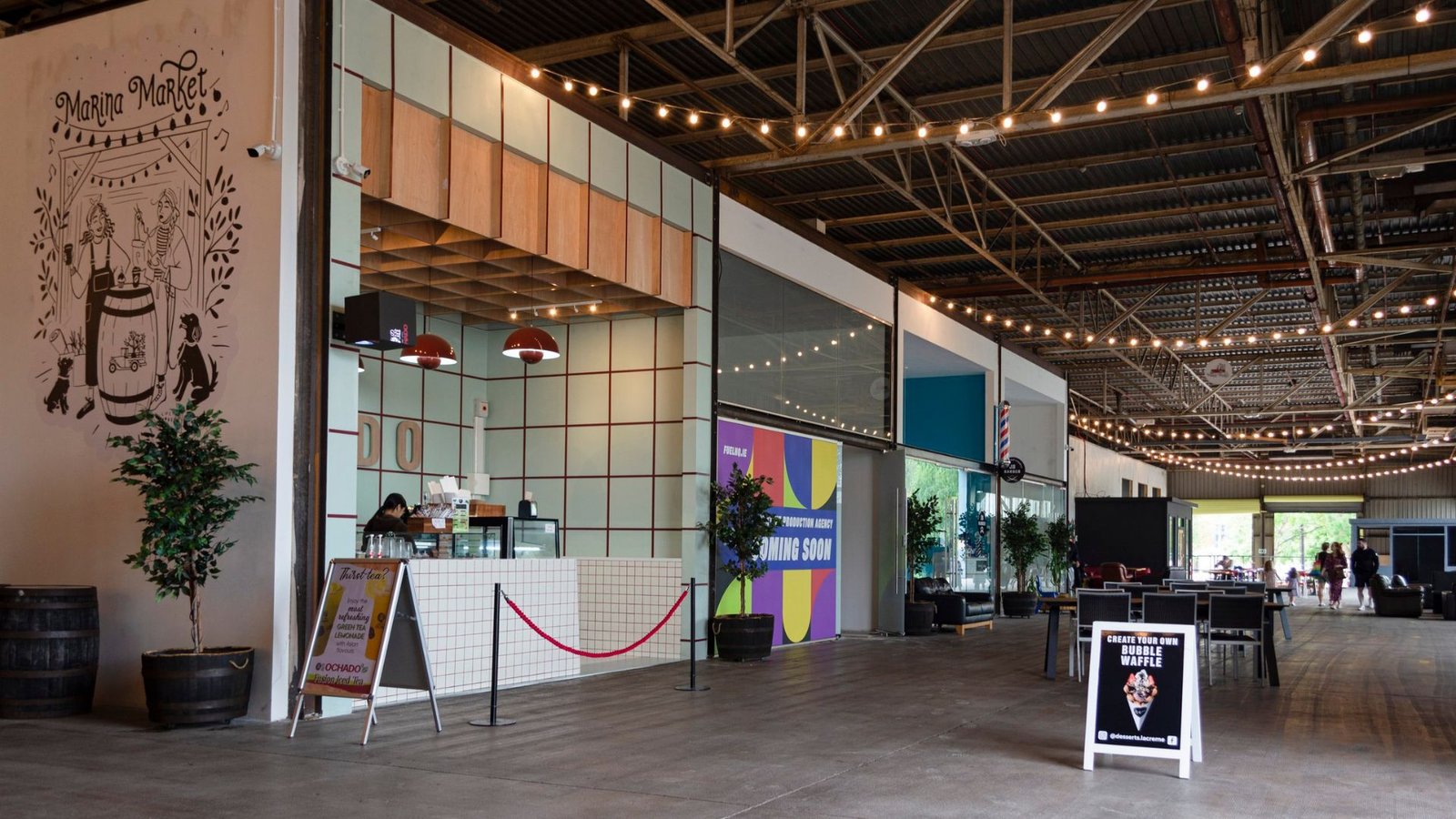Sligo is one of those places in Ireland where nature steals the spotlight at every turn. When I visited with my friends, we were blown away by the variety of things to do in Sligo—from scenic drives to misty waterfalls.
Gleniff Horseshoe was a personal favourite, with its dramatic mountains and quiet charm. Glencar Waterfall felt straight out of a fairytale, and hiking to the Devil’s Chimney, Ireland’s tallest waterfall, was an unforgettable experience. Whether you’re chasing views or craving quiet beauty, Sligo delivers on all fronts.
Things To Do In Sligo
Climb the Gleniff Horseshoe
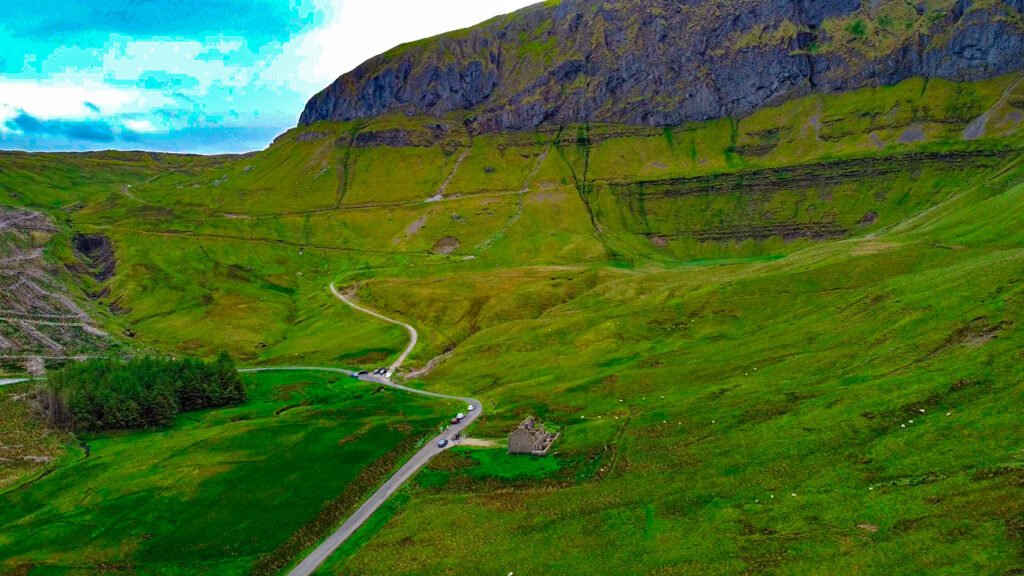
Nestled beneath the towering Dartry Mountains, the Gleniff Horseshoe is a breathtaking glacial valley featuring a narrow, 10 km loop road lauded for both walking and driving.
Craft your experience to fit your style: take a scenic 30‑minute drive, or lace up for a moderate 9–13 km hike—walking takes roughly 3–4 hours, depending on your chosen trail .
Check out my detailed guide to Gleniff Horseshoe for more information.
Visit Glencar Waterfall
Nestled on the border of County Sligo and Leitrim, Glencar Waterfall is one of the most enchanting spots in the region. A picturesque 50 ft cascade plunges into a dark, mossy pool, creating a misty, fairytale atmosphere that inspired W.B. Yeats’s poem “The Stolen Child”.

There’s a cosy charm to the whole area, from the family-friendly facilities to the lakeside picnic spots nearby. You’ll also find a little café called the TeaSHED, perfect for grabbing a coffee or a treat while soaking in the views.
Check out my detailed guide to Glencar Waterfall for more information.
Visit The Devil’s Chimney
The Devil’s Chimney is one of Sligo’s most dramatic natural landmarks—and officially the tallest waterfall in Ireland, standing at 150 metres (492 feet).
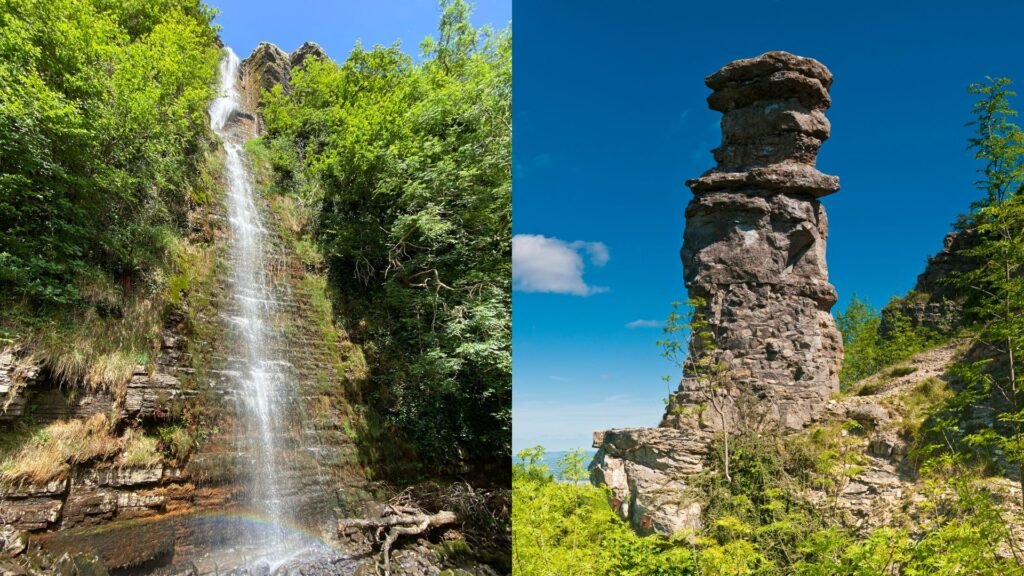
Tucked away in the Dartry Mountains near Glencar Lough, the Devil’s Chimney is reached by a moderate 1.2 km walking trail that takes about 45 minutes to 1 hour round trip. The trail starts from a small car park along the Glencar road and winds gradually uphill through a peaceful woodland path
Check out my detailed guide to the Devil’s Chimney for more information.
Follow the trail to see the Mullaghmore Head
Mullaghmore Head, or An Mullach Mór, juts proudly into the North Atlantic, its windswept cliffs and golden sands framed by the looming silhouette of Ben Bulben and the fairytale spires of Classiebawn Castle.
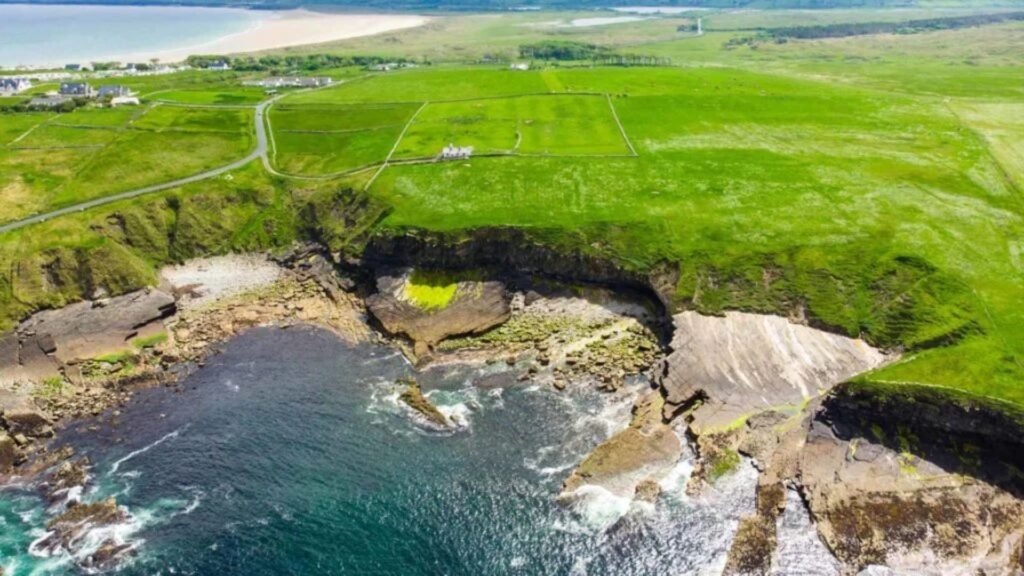
As you step onto the crescent-shaped beach, the Atlantic surf greets you—small swells lap gently in summer, but winters bring monstrous waves that have made Mullaghmore world-famous among extreme surfers. A walking loop traces the rugged coast from the village harbour, offering sweeping panoramas across Donegal Bay.
Check out my detailed guide to the Mullaghmore Head for more information.
Visit the Coney Island
ucked off the coast of Strandhill and Rosses Point, Coney Island—or Inishmulclohy-meaning “island of rabbits”—is a tidal gem brimming with history, wildlife, and haunting beauty.
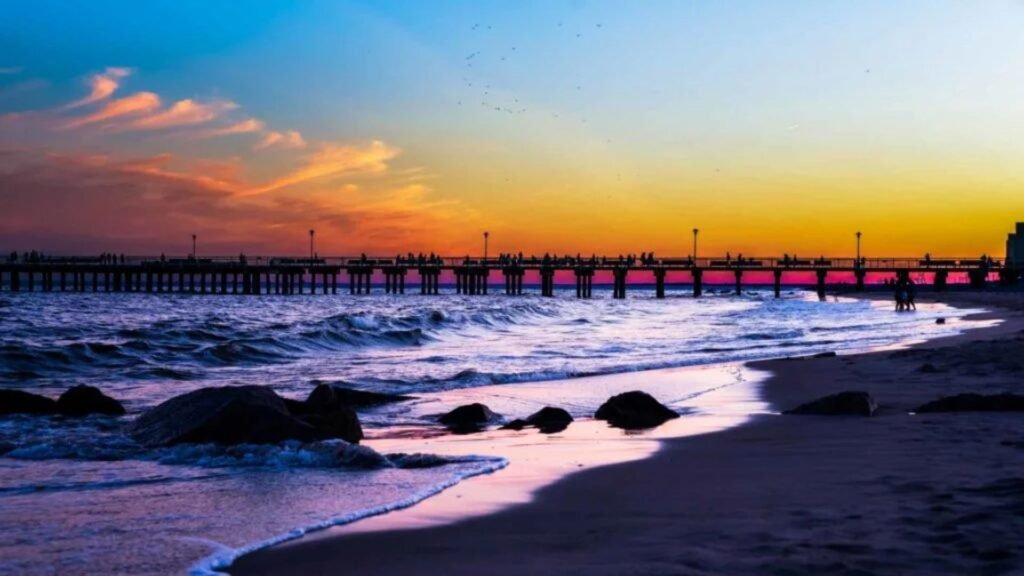
Once on the island, you’ll be struck by stark stone walls and rabbit trails weaving across empty beaches and grassy knolls.
Hike to the famous Knocknarea- “Hill Of Kings”
Knocknarea, aptly nicknamed the “Hill of Kings,” is a commanding limestone mountain rising to 327 m above the Coolera Peninsula.
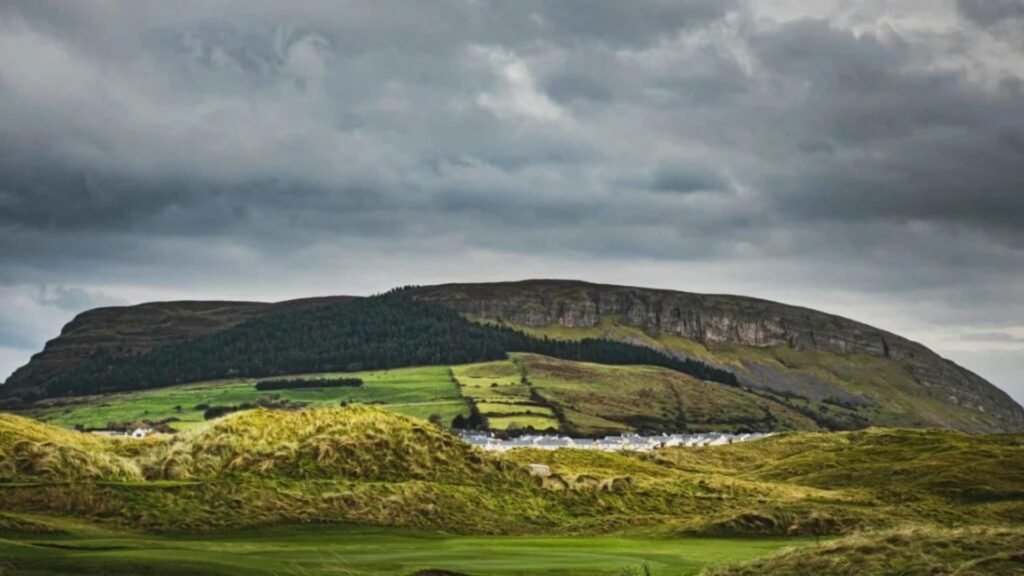
The mountain isn’t just another hike—it’s a pilgrimage through time and myth. Trails like the “Queen Maeve Trail” climb steeply through woodland and rough limestone slopes before opening onto the plateau studded with smaller tombs, hut remnants, and ritual embankments. The climb is moderately challenging, taking about 2 hours.
Explore the history of Carrowmore
Nestled on the Coolera Peninsula just a few kilometers from Sligo town, Carrowmore Megalithic Cemetery is Ireland’s oldest and densest cluster of Neolithic passage tombs.
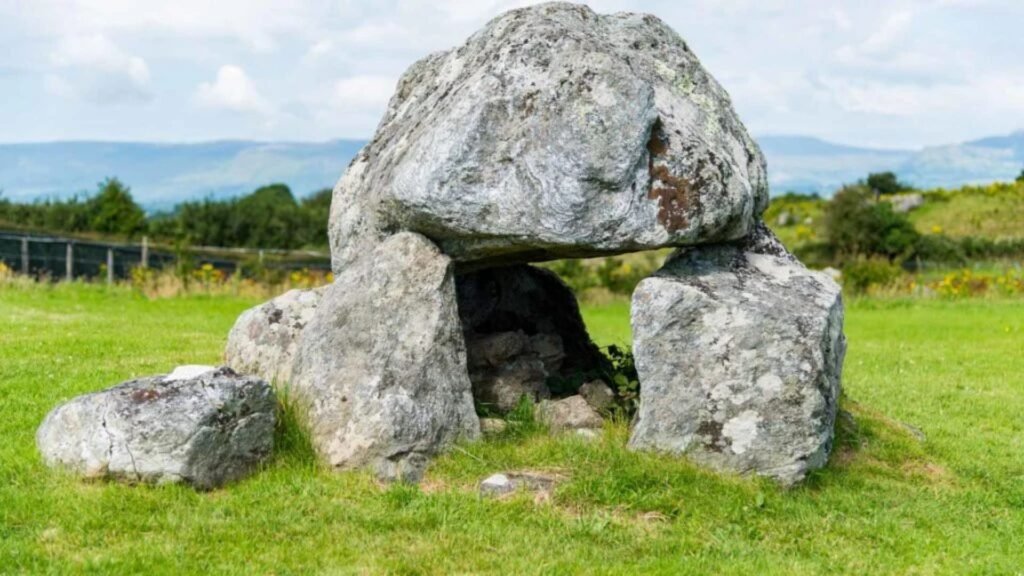
Imagine stepping into a timeless landscape, dotted with over 30 surviving tombs—though archaeologists have identified nearly 60 in total—each built from rugged gneiss stone and grouped around the grand central cairn, Listoghil
Visit Lough Gill Lake
Lough Gill stretches nearly 8 km long and 2 km wide, quietly straddling the border of Counties Sligo and Leitrim. Surrounded by lush woodlands—Slish Wood, Dooney Rock, Hazelwood—and framed by rolling hills like Slieve Killery, the lake feels like a hidden sanctuary in Yeats Country.
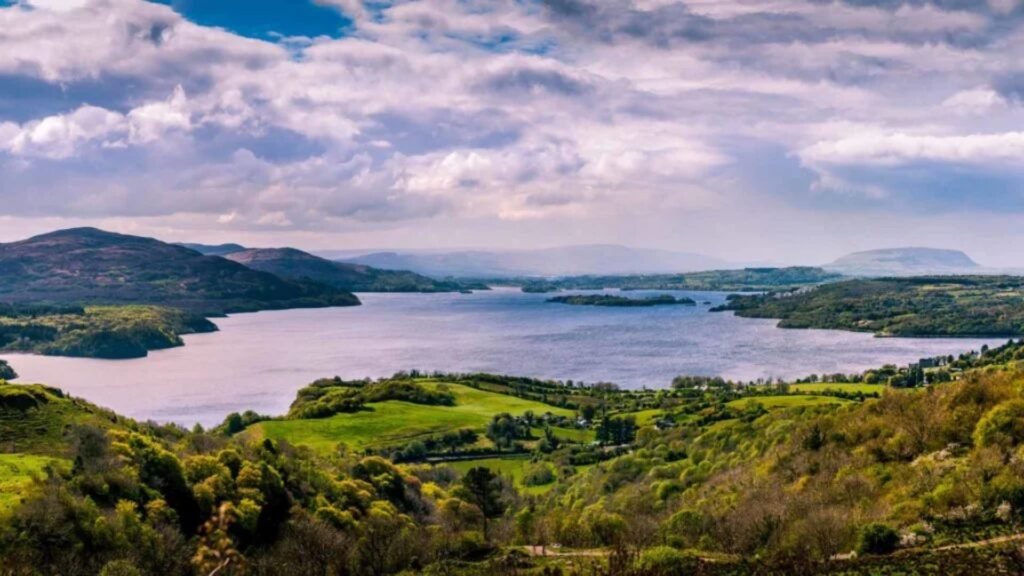
For nature lovers, Lough Gill’s ecological diversity hits a sweet spot—it’s a Special Area of Conservation, boasting rare orchids, northernmost strawberry trees, and a rich wildlife tapestry including lamprey, Atlantic salmon, otters, terns, and kingfishers.
Dwell Into The Irish History At Sligo Abbey
Located on Abbey Street in Sligo town, Sligo Abbey offers you a glimpse into the past through its well-preserved ruins and rich heritage.

It suffered significant damage in 1414 due to an accidental fire, was ravaged during the Tyrone War in 1595, and faced further destruction in 1641 during the Ulster Uprising. Despite these calamities, the friary was restored in the 1850s by Lord Palmerston, preserving its architectural grandeur for future generations.
Visit Rosses Point
Rosses Point is a picturesque seaside village located approximately 8 km north of Sligo town, nestled between the rugged Dartry Mountains and the tranquil Sligo Bay.
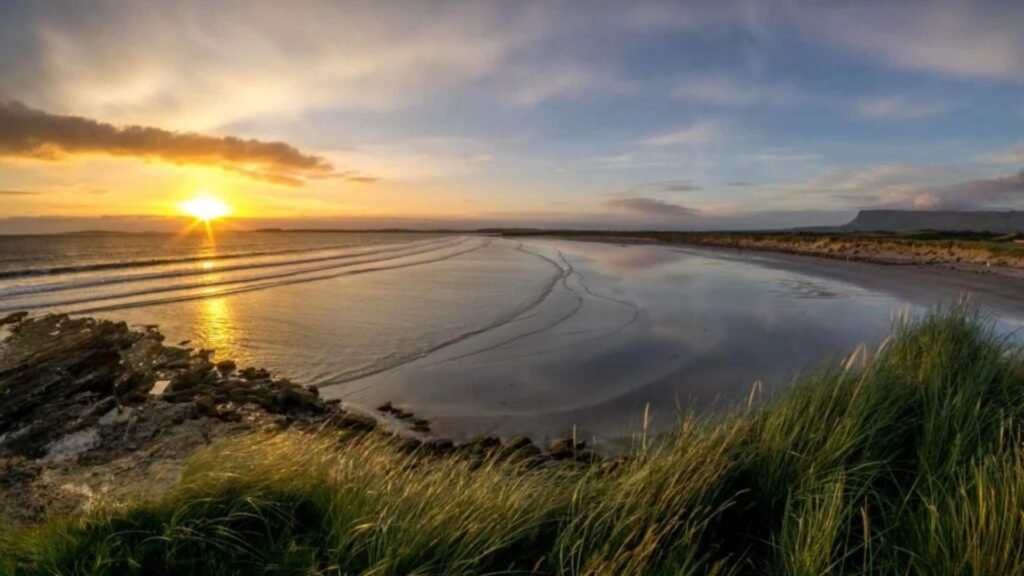
The village boasts three distinct beaches—First, Second, and Third Beach—each offering unique experiences.
For those who enjoy outdoor activities, the Rosses Point Coastal Walk also offers a leisurely 2.4-mile loop suitable for all ages.
Visit Drumcliffe Parish Church
Consecrated in 1809, Drumcliffe Parish Church stands on the site of an earlier 6th-century monastic settlement founded by St. Columba. The church is renowned for its neo-Gothic architecture and its association with the celebrated poet W.B. Yeats, who is buried in the churchyard.

The present church was constructed in 1808 under the Board of First Fruits initiative, which aimed to provide funding for the construction of churches in Ireland.
Visit Parke’s Castle
Originally known as Newtowne, Parke’s Castle was granted to Captain Robert Parke, an English settler, following the execution of the O’Rourke clan’s chief, Sir Brian O’Rourke, in 1591.
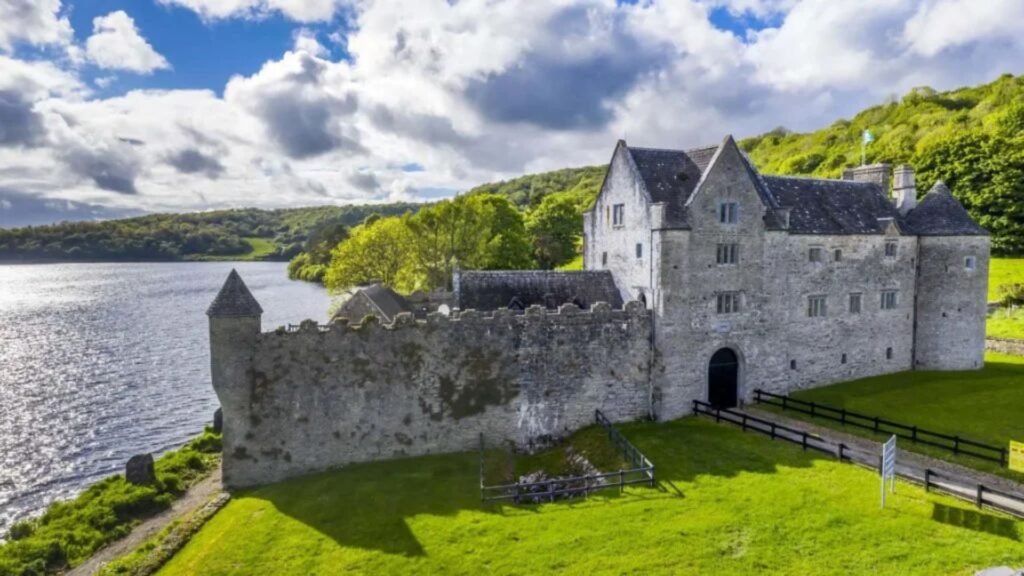
Today, it serves as a captivating historical site. You can explore the restored manor house, view the permanent exhibition featuring 17th-century artefacts, and enjoy guided tours that delve into the castle’s rich past.
Visit Lissadell House and Gardens
Lissadell House and Gardens, nestled on the northern shore of Drumcliff Bay, is a neo-classical Greek Revivalist mansion that offers a rich tapestry of history, literature, and horticulture.
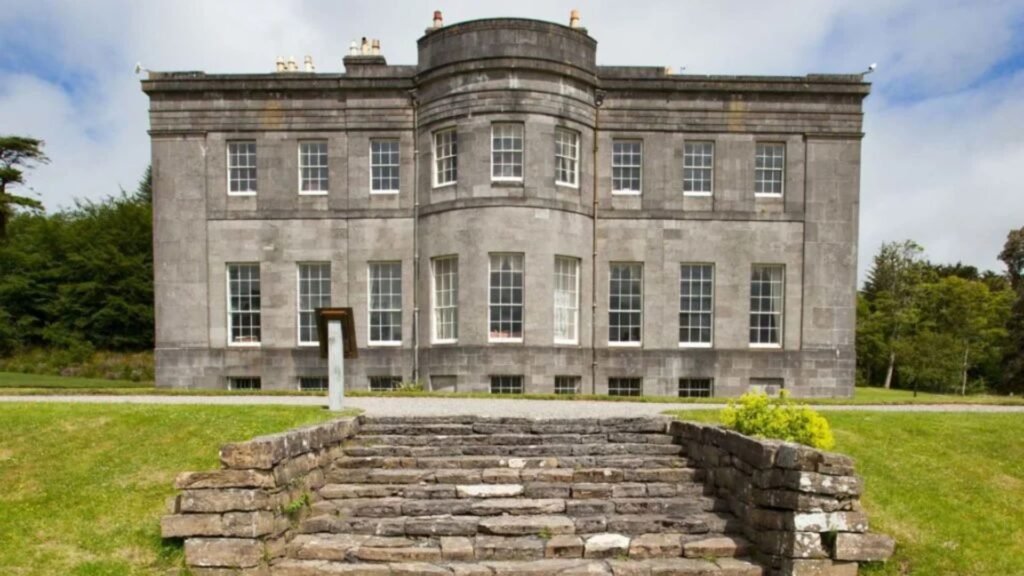
The estate’s gardens, including an alpine garden and a Victorian walled garden, were once renowned for their beauty and variety. They now supply local restaurants and markets with produce, contributing to the estate’s revitalization.
The Caves of Keash
The Caves of Keash are a breathtaking mix of natural beauty and ancient mystery. A short uphill hike rewards you with stunning views across Sligo’s lakes and mountains, framed perfectly by the cave mouths. It’s the kind of place where every step feels like walking deeper into Ireland’s past.

Archaeologists discovered Ice Age animal bones and ancient human remains here, while folklore claims King Cormac Mac Airt was raised by a wolf in the largest cavern. Blending myth, archaeology, and panoramic landscapes, the Caves of Keash are a must-visit for any curious traveller.
The Benbulben Forest Walk
The Benbulben Forest Walk is one of Sligo’s most rewarding trails, offering spectacular views of Ireland’s most iconic mountain. This relatively easy looped walk winds through lush forests before opening up to wide panoramas of Benbulben’s dramatic flat-topped summit.

The well-marked route is about 5.5 km long and takes roughly 1.5 hours. With its peaceful forest, fresh mountain air, and unforgettable vistas, exploring the Benbulben Forest Walk was a unique experience for us.
The Knocknashee Walk
The Knocknashee Walk takes you up to the “Hill of the Fairies,” one of Sligo’s most enchanting hidden gems. Rising over 270 meters, this limestone plateau rewards walkers with breathtaking 360° views over Ox Mountains, Carrowmore, and even as far as Donegal Bay on a clear day.
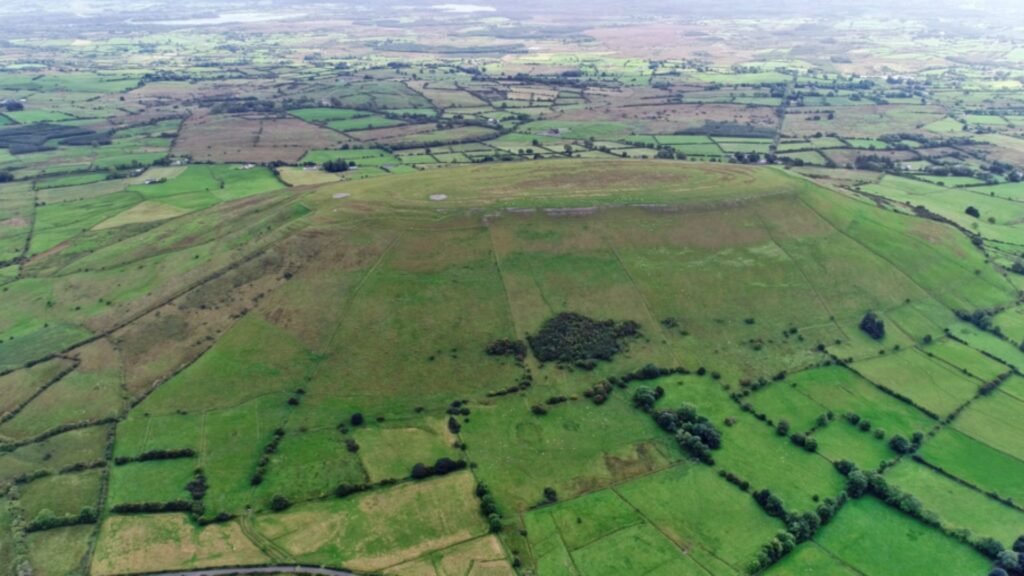
As you reach the top, the sweeping views and sense of timelessness make the Knocknashee Walk an unforgettable experience for anyone seeking both history and nature in one place.
Restaurants in Sligo
- Eala Bhan Sligo
- The Venue Bar and Restaurant
- Hooked Sligo
- Shells Cafe
- Coach Lane Restaurant at Donaghy’s Bar
Hotels in Sligo
Frequently Asked Questions (FAQs)
How to travel around Sligo?
Car is the best option for traveling in Sligo as you can stop wherever you want and plan your itinerary in your own way.
Another option is the local buses, you will have several bus stops in the county, for more information and timings of the bus click here.
When is the best time to visit Sligo?
April to October is the best time to visit Sligo as this is the time when you will be able to enjoy all the things to do in Sligo without worrying much about the weather conditions.
As the weather is delightful around this time, you will also have many more tourists with you, making your travel a bit expensive.
Conclusion
Sligo’s rich history, stunning landscapes, and vibrant culture offer unforgettable experiences, making it a must-visit destination for every traveler and explorer.
I hope this information will be helpful for your trip there. If you plan to visit here, let me know which place on my list of things to do in Sligo proved the most appealing to you.

